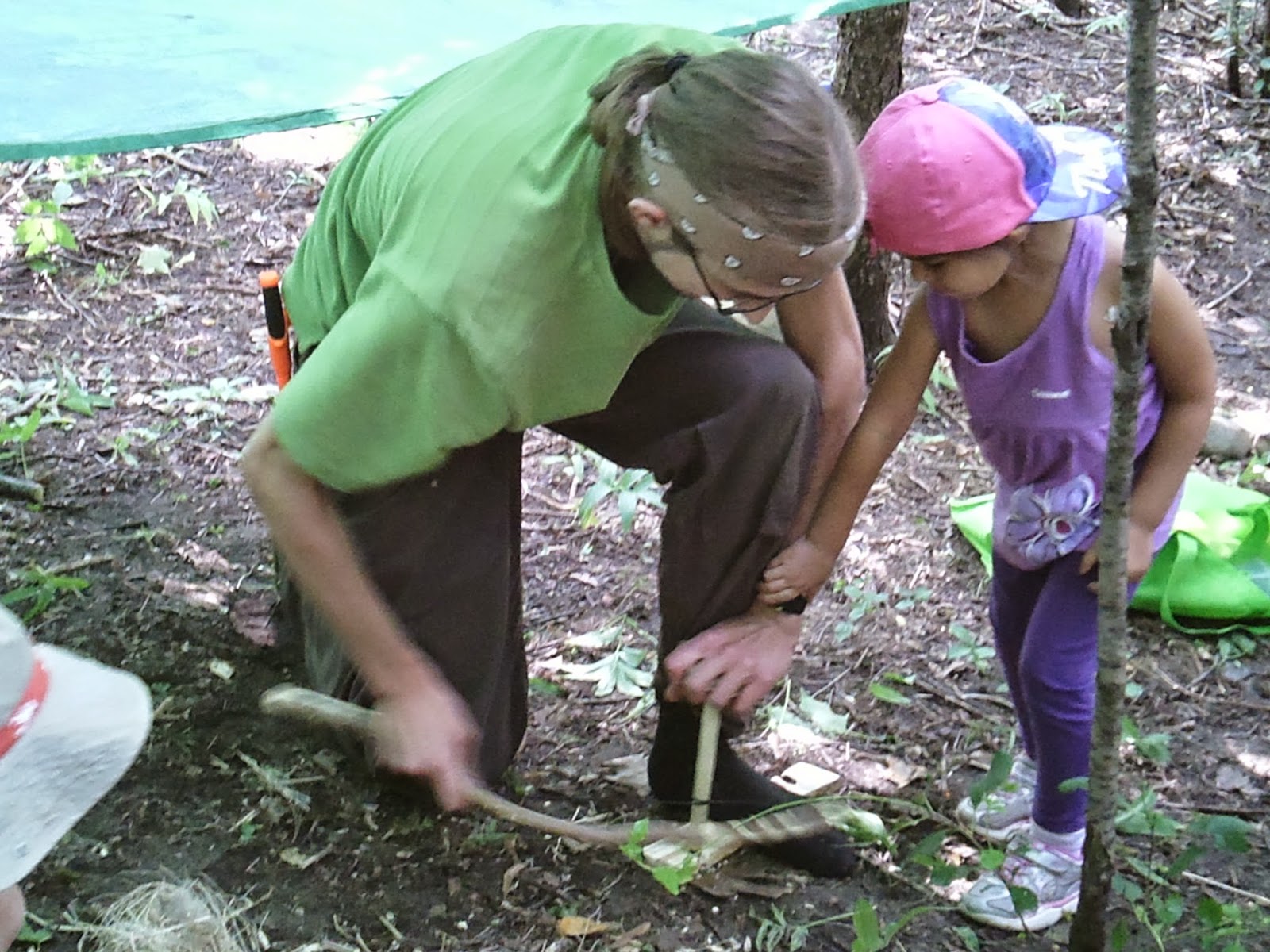Take a look at the tools in the picture above. Do you know what each of them is for? Any guesses as to the ones you don't recognize? If you had to pick only a few to take with you into an extended stay in the forest, which would you choose?
Last Sunday, August 17, seventeen parents and children came out to Waterloo Park to take part in a workshop hosted by Transition Families called "Elements of Forest Living". I had the privilege of leading the workshop, and I'd been looking forward to the opportunity to pull these objects out of my bag of tricks and put them to work in their natural environment.
Waterloo Park is a gem in the midst of our fine city. It has a lake, a splash pad, playing fields, baseball backstops, and most importantly from my view, extensive wooded areas along the quiet banks of Laurel Creek- more than enough forest in which to set up my temporary shelter and spend an afternoon teaching the tools of the trade.
My work as a field leader at KW Forest School, an outdoor after school program for kids, is all about exploring the elements of forest living. During Sunday's workshop we worked with the elements most essential to life anywhere: shelter, water, fire, and food. But there are others. My interest in nature and in naturalist skills has always been rooted in the question: what does life consist of, in its most basic elements? How can learning about these elements teach us to live well?
There's an element of excitement in learning 'survival skills', but to be honest, bare survival doesn't interest me all that much. I've always loved reading stories by Gary Paulsen, Jean Craighead George, and John Tanner, stories about the struggles of individuals to live lives of meaning and purpose in places where natural elements threaten to destroy them. But the best part of those stories is always when the young protagonist returns to human society with a keener and deeper sense of themselves and of their relationships with others.
I believe that taking time to learn what our lives are made of can help us to see more joy in our lives together, even in the moments of discomfort nature might throw our way- a rainy day, a wrong turn on a long hike, or a storm that knocks out the power for days. As a teenager, learning the difference between need and want on a week-long canoe trip helped me to grow into a much happier and more easygoing adult later on.
Our program at KW Forest School doesn't involve week-long trips, or putting knives and saws into the hands of young children, either. But it does teach kids to be confident using tools they can find in their immediate environment, whether it's an interestingly shaped stick, a fibrous plant perfect for making good strong cordage, or a slope ideally suited for use as an impromptu slide. And who knows? They might learn a few useful tricks to pass on to the rest of us. Curious? I know I am.
Transition Families is a new sub-group of Transition KW, focused on bringing together families interested in low-carbon living.
We meet every month to experience Nature by:
- Hiking in local natural areas
- Learning to ID local plants and animals
- Tree Planting
- Cleaning up our environment
But most of all by Having Fun!!
This post has been cross-posted to the blogs of Transition KW and KW Forest School.




No comments:
Post a Comment